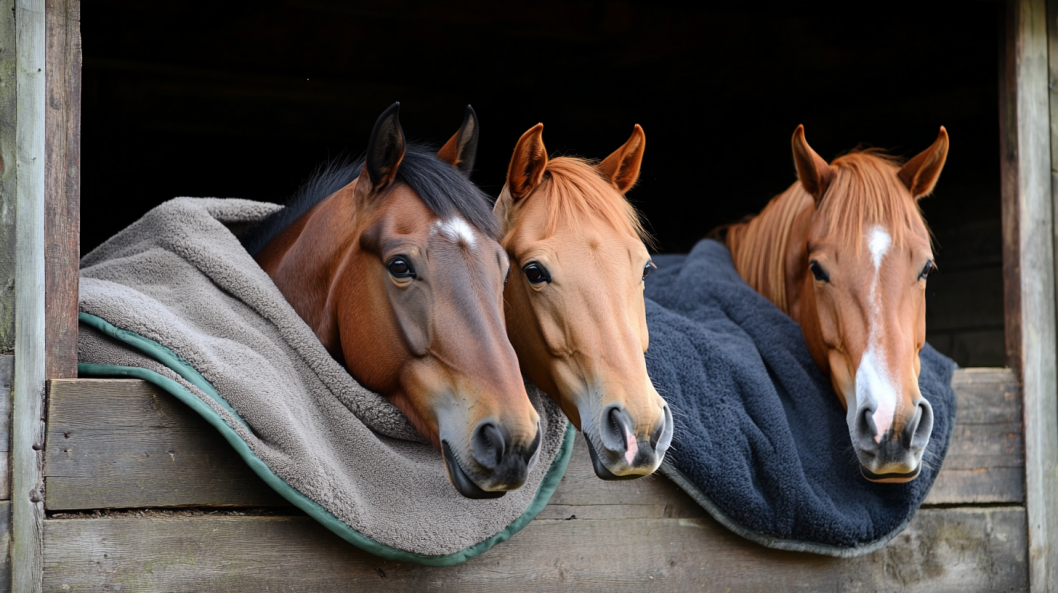Choosing the right blanket is essential when keeping your horse comfortable and protected. The right material can significantly affect your horse’s health and comfort. With so many options available, how do you decide what’s best?
From an expert perspective, choosing the right material for your horse’s blanket is more than just a matter of preference—it’s a critical aspect of ensuring your horse’s well-being and performance. It’s not just about keeping them warm or dry; it’s about selecting a material that suits their lifestyle, protects them from the elements, and supports their overall well-being. Here’s a guide to help you navigate the choices and find the perfect material for your horse blanket.
1. Understand Your Horse’s Needs
Before diving into materials, consider your horse’s specific needs:
- Climate: Is your horse in a cold, wet, or mild climate? Different materials offer varying degrees of insulation and waterproofing.
- Activity Level: Is your horse in light or heavy work? Active horses may require more breathable or durable materials.
- Health Considerations: Horses with skin issues or allergies may need blankets made from hypoallergenic or softer materials.
2. Common Materials for Horse Blankets
a. Polyester:
- Pros: Lightweight, durable, and resistant to wrinkles and shrinking. It also dries quickly, making it ideal for wet conditions.
- Cons: It is not as breathable as natural fibers, which could lead to sweating if it is not well-ventilated.
b. Nylon:
- Pros: Strong and abrasion-resistant, making it ideal for active horses. It’s also water-resistant and easy to clean.
- Cons: It can be less breathable than other options, potentially causing overheating if properly lined.
c. Fleece:
- Pros: Soft, warm, and highly breathable. Fleece is great for layering and wicking moisture away from the horse’s skin.
- Cons: Less durable and may not provide enough protection against the elements.
d. Wool:
- Pros: Excellent natural insulation, moisture-wicking, and temperature-regulating. It keeps your horse warm even when damp.
- Cons: Requires more care, as wool can be prone to shrinking and is more expensive than synthetic options.
e. Waterproof Materials:
- Pros: Essential for wet climates, as they keep the horse dry and comfortable. Typically made with a combination of materials and coatings.
- Cons: It may not be as breathable, so look for options with ventilation features.
3. Consider the Blanket’s Design
a. Lining:
- Fleece or Quilted Linings: Offer extra warmth and comfort. They help with moisture management and prevent the blanket from rubbing against the horse’s skin.
- Mesh Linings: Ideal for warmer weather as they promote airflow and prevent overheating.
b. Fill:
- No Fill: Suitable for mild weather or as a stable sheet. Provides basic coverage without additional insulation.
- Light Fill: Ideal for cooler weather, offering warmth without bulk.
- Heavy Fill: Best for cold weather, providing significant insulation and warmth.
c. Closure Systems:
- Buckles, Velcro, and Surcingles: Different closure types can affect the fit and security of the blanket. Choose closures that are easy to use and ensure a snug fit.
4. Fit and Sizing
Regardless of the material, the fit of the blanket is crucial. A well-fitted blanket should cover your horse’s shoulders, back, and hindquarters without restricting movement. Check size charts provided by manufacturers and measure your horse accurately before purchasing.
5. Maintenance and Care
Different materials require different care routines:
- Synthetic Fabrics: Often machine washable and easy to maintain.
- Wool: Typically requires hand washing or dry cleaning to preserve its properties.
- Waterproof Materials: They may need special treatments to maintain their effectiveness.
6. Budget Considerations
While higher-quality materials may have a higher price tag, they often offer better durability and performance. Investing in a well-made blanket can save money in the long run by reducing the need for replacements.
In my professional opinion, the right horse blanket is not just an accessory—it’s a vital part of your horse’s comfort and care. Investing time and thought into choosing the best material and design for your horse’s needs will improve their overall well-being and performance. A well-chosen blanket can significantly affect how your horse feels and performs; their comfort is worth every effort and consideration.





